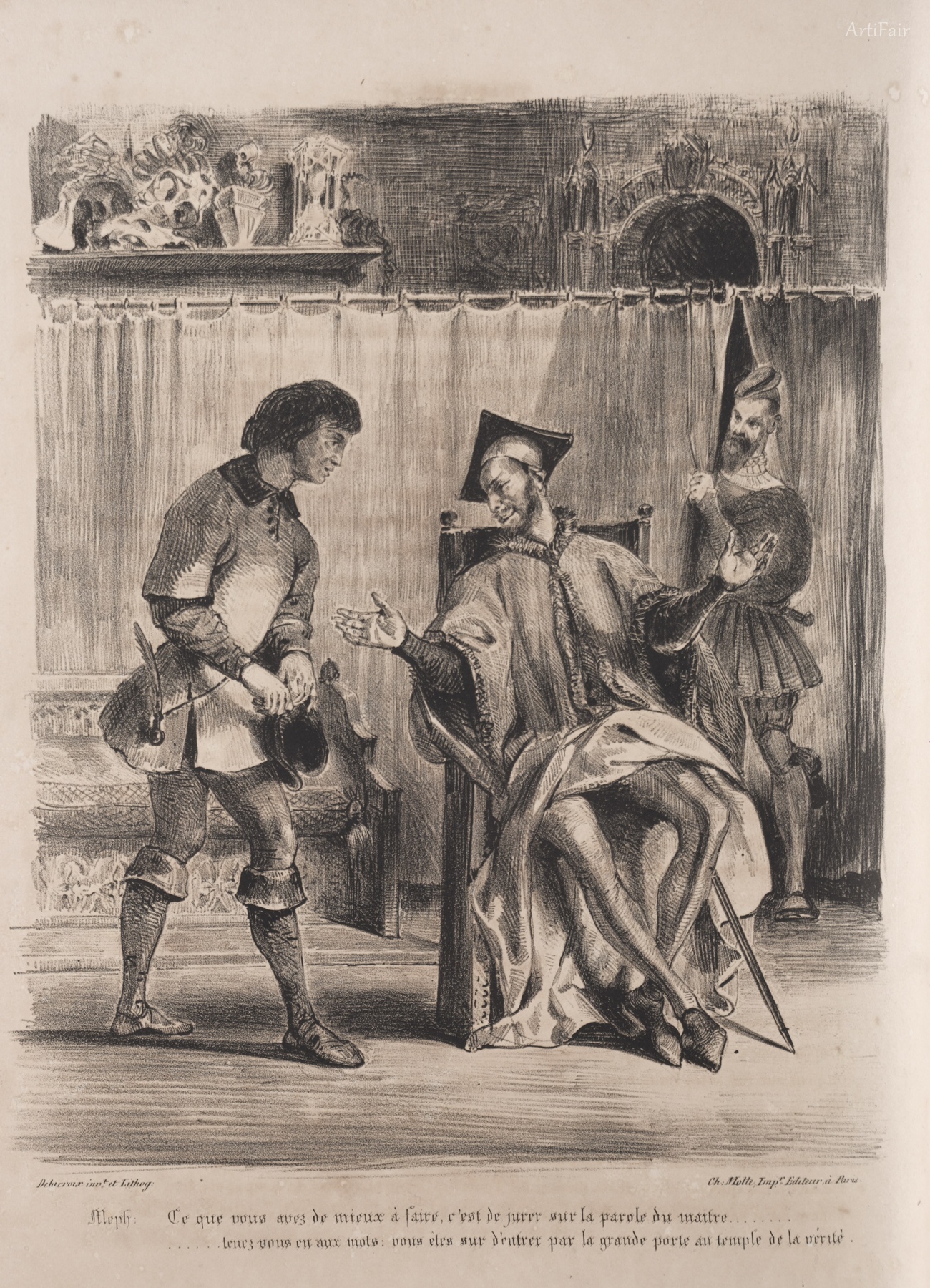
Art Appreciation
The artwork presents a vivid scene from the narrative of Faust, capturing a moment of intriguing tension. In the foreground, we see Méphistophélès, the diabolical figure, engaging with a youth who stands attentively before him. The contrast between their expressions creates an engaging dialogue: the youth appears both eager and apprehensive, embodying the innocence and allure of temptation. The figure of Méphistophélès, draped in elaborate garments, exudes an air of confidence and cunning. Behind them, the backdrop is adorned with rich textures and details, enhancing the atmosphere of the scene—the thick drapery and decorative elements hint at a world of opulence intertwined with moral intricacies.
The composition is masterfully balanced; the figures are anchored against the architectural features that suggest both grandeur and confinement. The color palette leans toward deep, rich tones with a hint of warmth—a blend of earth tones, contrasting highlights, and dark shadows that frame the characters. This creates a dynamic visual interplay, evoking feelings of intrigue and foreboding. The artwork resonates with historical significance, as it draws on Goethe's Faust, illustrating timeless themes of ambition, desire, and the moral conflicts entwined with human experience. The emotional impact is palpable; the viewer is left to ponder the implications of choice in the face of temptation, drawing parallels to modern dilemmas. Delacroix’s rendering highlights not only his technical skill but also his ability to imbue narrative art with depth and resonance.